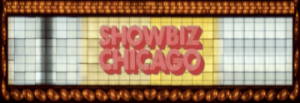Joffrey Launches Season with A Sophisticated ROMEO & JULIET

Reviewed By: Bob Sphatt
The Joffrey Ballet launched its 2016-2017 season with the return of Polish National Ballet Director Krzysztof Pastor’s Romeo & Juliet, first presented in its Chicago premiere in 2014. Romeo & Juliet is presented in 10 performances at the Auditorium Theatre of Roosevelt University October 13-23, 2016.Composed by Sergei Prokofiev in 1940 and based on William Shakespeare’s play Romeo and Juliet, Prokofiev reused music from the ballet in three suites for orchestra and a solo piano work originally for the Kirov but after some Soviet upheavals, the Bolshoi took over the production and changed the happy ending back to Shakespeare’s tragic finale and ballerina Galina Ulanova met with high acclaim as Juliet. Romeo and Juliet is a “neo-classical” ballet. Neoclassical ballet is the style of 20th century classical ballet exemplified by the works of George Balanchine. The term “neo-classical ballet” appears in the 1920s with Sergei Diaghilev’s Ballets Russes, in response to the excesses of romanticism and modernity. It draws on the advanced technique of 19th century Russian Imperial dance, but strips it of its detailed narrative and heavy theatrical setting.
What is left is the dance itself, sophisticated but sleekly modern, retaining the pointe shoe aesthetic, but eschewing the well-upholstered drama and mime of the full-length story ballet.
This contemporary rendition of Shakespeare’s classic tale takes many liberties with the original story and uses a multimedia video backdrop to depict three different political eras of the 20th century…but the one projection remains the same throughout the evening. Strange because Shakespeare’s original story takes place within a very few short days of action and the choreographer wants us to believe the action is encompassing three different decades in Italy’s history. Strange. Just strange.
The timeless tale of love and loss unfolds to the darkly intense and beautifully bombastic score by Sergei Prokofiev performed live by the Chicago Philharmonic under the direction of Joffrey Music Director Scott Speck. The Chicago Philharmonic Orchestra has never been in such fine form as last evening. The strings and brass were thrilling. Bravi tutti!
The choreographer decided to make this production highly political with positive gestures toward the Progressive/Liberal Left and demonizing the Conservative/Right. When the arts become political they themselves will suffer as we have so easily seen many of the Hollywood elite with their box office profits taking a hit. When a work of art is reimagined this specifically and narrowly, it limits and diminishes its power and universality. In our current age of complexity, there has never been a more important moment for dance to express our human condition – and let the politics go. Romeo & Juliet is not a political statement. Joffrey Ballet chooses and desperately tries to make it into one! Thank goodness that falls flat!
The ballet opens with imagery of Italy in the 1930’s, the time of Mussolini and the rise of Fascism. The Capulet family represents the upper class conservatives with stiff, militaristic movement, while the Montagues represent the liberal low and middle classes, danced with loose, flowing motions laced with pedestrian naturalism. The Joffrey press release and program tell us that Act II act shifts to the 1950’s, the rise of the Red Brigade and increased political terrorism, a fitting scene for the tensions blocking Romeo and Juliet’s passionate romance – but doesn’t make it. The third act, closer to the 1990’s during Berlusconi’s leadership and increasing social divisions, escalates the conflict toward the story’s tragic conclusion and again the production does not achieve its aim. Same sets, same dancers, same costumes. What did I miss? Where am I?
Choreographer Krzysztof Pastor’s counterpoint of the star-crossed lovers and real world politics heightens the universal plight — applicable to lovers from any conflicting background, political, ethnic, religious or otherwise — and amplifies the metaphor of a group sacrificing its individuals for the sake of divisive politics however Pastor gives us no ideas of how to embrace and transform our world but only contributes to more divineness and derision. The story in his version gets lost. Bravura dancing, touching lyricism and epic storytelling unite in this rendering of ill-fated true love. The Joffrey Ballet Company has never been in such fine form! No matter the choreography! The men and ladies possess virtuoso leaps; control plus all are well centered. Their technique, personalities and emotions are all fully expressed. Any of these young artists could interpret any of the roles as they (along with the Chicago Philharmonic) are the stars of the evening!
Rory Hohentein (Romeo) and Christine Rocas (Juliet) were outstanding throughout the evening and especially in their Act I pas de deux (even though I did not feel any physical attraction between the two. Paris Opera Ballet trained Fabrice Camels (Lord Capulet) who danced in Romeo & Juliet here many years ago was outstanding and his height plus acting abilities worked so well for him!
Romeo & Juliet is presented as part of Shakespeare 400 Chicago, a yearlong international arts festival in 2016 celebrating the vibrancy, relevance and reach of Shakespeare as the world commemorates the four hundred years since Shakespeare’s death in 1616 and Shakespeare’s enduring legacy (even though you had better read the synopsis to each and every scene in the program in advance no matter how well you know Shakespeare’s tale.

